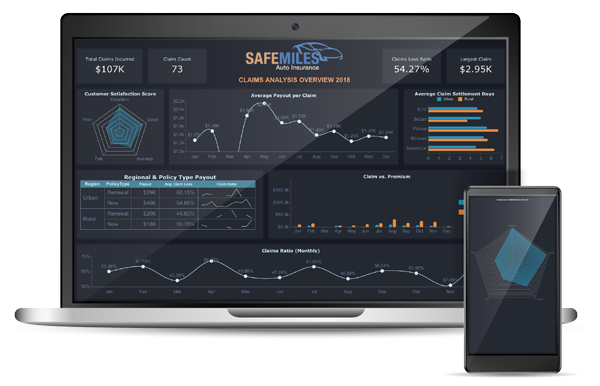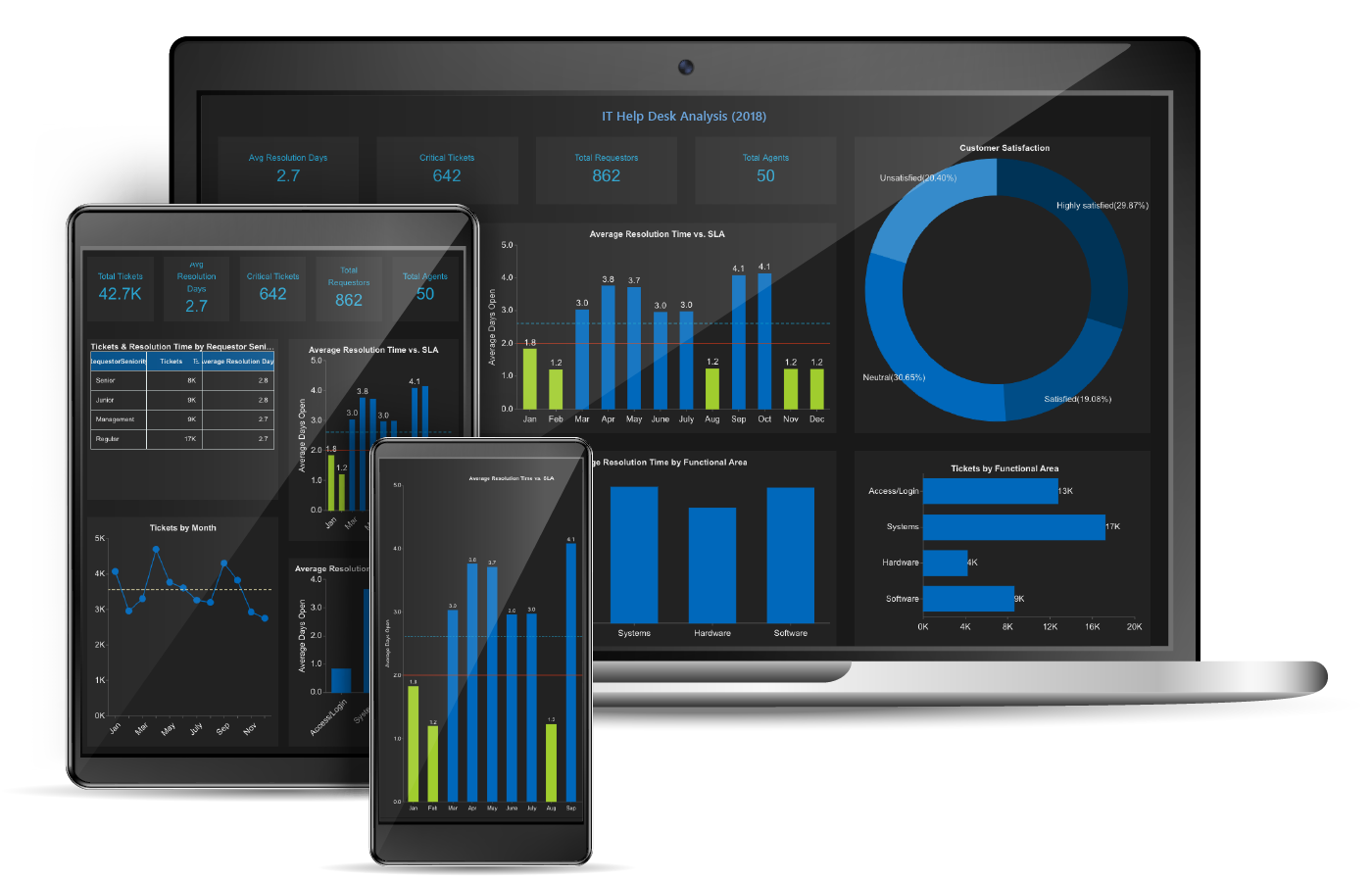The line between business strategy and technology has become almost indistinguishable. Conversations about growth are now predicated on technology infrastructure. From the C-suite to the front line, everyone in the organization is turning to data to measure, evaluate, optimize, and strategize.
This data, or business intelligence, is accelerating growth and solidifying market strength for businesses across every industry. However, in the pursuit of data-driven growth, scalability is quickly becoming a key driver of long-term success.
Here are just a few things to look for in a scalable BI solution:
The first signs of scalability begin with a full understanding of true costs. It’s not always clear what the final price tag will be. Clever marketing and a variety of unknowns make it difficult to compare pricing from one product to another, adding ambiguity to the selection process.
Here is what to look for:
-
Setup Fees: All-inclusive vs. itemized
-
Subscription Models: Flat rate fees vs. per user or per data allowance
-
Usage Limits: Data caps or surcharges based on volume
-
Total Cost of Ownership (TCO): Set up and integrations, licensing, technical support, and future development
Poor pricing models can quickly restrict growth by limiting the number of users or amount of data that a business can support. Scalable BI solutions, like Wyn Enterprise, are designed to keep costs inline by offering a straightforward and reliable TCO that isn't based on per user fees or data limits.
Security and data governance in BI
Another sign of scalability is security. As data becomes increasingly important to a business, the value of that data grows exponentially. And what is valuable to a business is also a risk that can be exploited. In fact, one study found that global cyberattacks increased 28% YoY in the third quarter of 2022, a trend that highlights the rise of opportunity from an increasingly connected digital world.
Scalable BI solutions are designed with a proactive approach towards security and data governance that will protect valuable business data now and as new threats evolve. For example, a scalable solution might include role-based permissions and automated monitoring for security events that facilitate access without creating an administrative burden for the IT department.
Ballooning risk derived from insufficient security measures and poorly established data governance practices can drive up insurance premiums and devalue the reputation of a business, both standing in the way of growth. Scalable BI solutions are designed to prioritize data safety while allowing widespread access.
Finally, keep in mind that a technology-based solution is only as good as its design. Volumes of data with layers of validation for accuracy is still just a mountain of data that becomes essentially useless if sales teams and operations managers need to rely on technical support to use it.
That’s where self-service user design becomes a priority in scalability. When the market shifts and your organization needs to adapt, you don’t have time to wait for developers to update your BI solution. A scalable solution will provide a user-friendly interface with low-code or no-code customizations that let your non-technical team get the data they need, when and where they need it.
The bottom line is that a scalable BI solution is the key to growth
Scalable BI promotes business growth by delivering access to key intelligence with the flexibility to adapt to change. Straightforward pricing models help businesses stay on budget. Native design for security and data governance makes these integrations safe to use. And self-service features make these solutions easy to use.
Altogether, scalable BI solutions provide tech enablement that the entire organization wants to use. Widespread adoption fuels efficiency-driving performance enhancement, which in turn leads to growth.






























